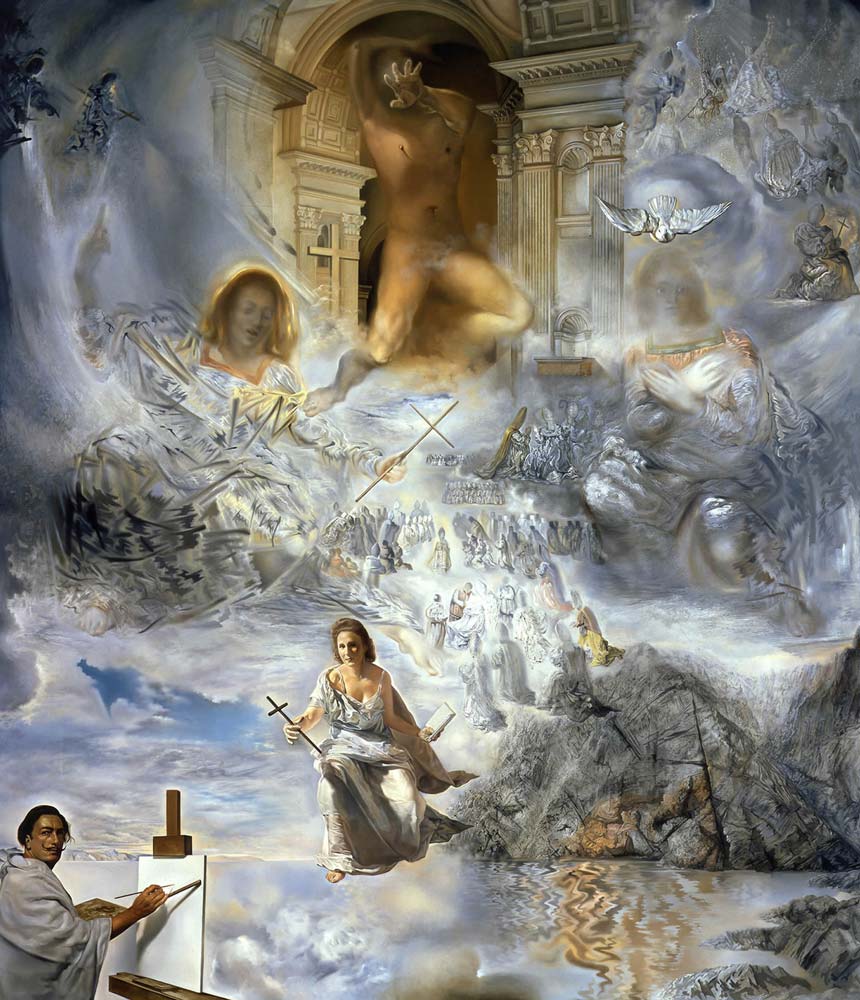| The Ecumenical Council | |
|---|---|
 |
|
| Artist | Salvador Dalí |
| Year | 1960 |
| Medium | Oil on canvas |
| Location | Salvador Dalí Museum in St. Petersburg, Florida |
| Dimensions | 118 in × 100 in |
| 299.7 cm × 254 cm | |
| Famous Paintings by Salvador Dalí | |
| The Persistence of Memory, 1931 | |
| The Disintegration of the Persistence of Memory, 1952-1954 | |
| The Face of War, 1940 | |
| The Ecumenical Council, 1960 | |
| Landscape Near Figueras, 1910 | |
| Christ of Saint John of the Cross, 1951 | |
| Lobster Telephone, 1936 | |
| Swans Reflecting Elephants, 1937 | |
| Apparatus and Hand, 1927 | |
| The Discovery of America by Christopher Columbus, 1959 | |
| Morphological Echo, 1934-36 | |
| The First Days of Spring, 1929 |
The Ecumenical Council is one of Salvador Dalí’s most interesting and highly acclaimed paintings. It was completed in 1960 and is a large oil on canvas painting, measuring 118 by 100 inches. The Ecumenical Council is currently exhibited in the Salvador Dalí Museum. Dalí painted The Ecumenical Council after being inspired by the possibility of having better days thanks to religious leadership after the disaster and turmoil left in many countries by the Second World War. At the time Pope John XXIII was elected, and Dalí felt inspired by this event.
About the Painting
The Ecumenical Council has various special attributes which make it not only a masterpiece, but also an interesting painting that calls for a lot of attention and comprehension. In the painting one can see several religious scenes. There are also numerous symbols that are related to Dali himself.
At the top, in the center of the painting one can see the Holy Trinity. The Father is not shown as the traditional old man, but rather a young man, painted in gold. He is covering his face and Dali decided not to paint his genitals. To the left of the Father, Dali painted Jesus, holding a cross in his hand. On the right there is the Holy Spirit with a dove flying above. In between one can see a scene that refers to the coronation of the Pope. Just below this, Dali painted his own wife, kneeling down and in her hands one can see a cross and a book. Many critics claimed that they thought that Dali wanted her to look like St. Helena, the saint who had found relics of the cross.
The background is very beautiful. There are sweeping clouds that seem to blend into each other, and in the lower part of the painting there are rocks and water flowing. Dalí tried to show that there is no distinction between the top and lower part, as if heaven and earth were actually merging together. The rocky coastline was inspired by Cape Creus, and it is another instance where Dali made use of a Spanish landscape in his paintings. It was known that he really loved his country’s natural attributes.
This part of the painting is very vividly painted, and it is a beauty in its own because it is practically 3-dimensional. It actually seems to be coming out of the canvas, and it makes the painting per se even more enchanting. From a symbolic point of view, the rocks may have been a way of connecting the painting to the Bible and its teachings about the Church. This is in reference to the part of the Bible where St. Peter was asked to build Christ’s Church on a rock.
Artistic Techniques
Salvador Dalí is renowned for his Surrealist paintings. In the The Ecumenical Council, Dalí made use of surrealist techniques which were also coupled up with numerous religious symbols. It was also a known fact that Dalí liked to include the Holy Trinity in his paintings, and this technique is evident in The Ecumenical Council as well.